|
Port Hardy (YZT)/Alert Bay
North Vancouver
Island did not have an airport until 1943,
but that did not dissuade a parade of
floatplanes and flying boats from visiting
the north coast. Many made regular stops in
the sheltered site in Alert Bay, just south
of Port Hardy, for fuel and haven from
adverse weather.
Return to
map |
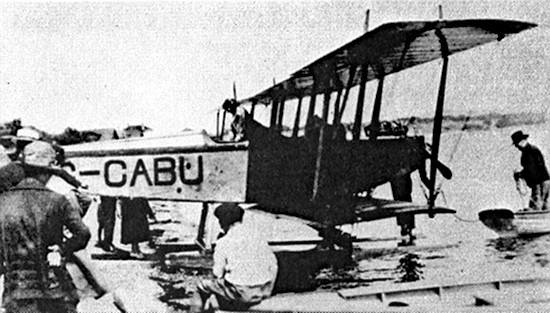
The
first air visitor to the North Island, in transit to
Prince Rupert, JN-4 on floats �Pathfinder II�, 1920.
|
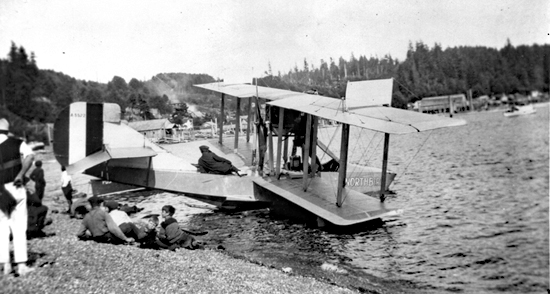
Curtiss MF Flying Boat
�Northbird� arrived in 1922. |
-Alert-Bay.jpg)
Curtiss HS2Ls from Jericho Beach were frequent
visitors to Alert Bay in the 1920s.
|
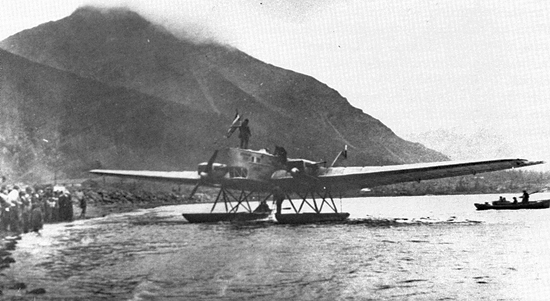
One
unusual arrival in October, 1929 was a Russian
Tupelov ANT-4 that was on a record setting flight
from Moscow to New York. It succeeded in arriving
at Long Island, NY, on November 1st.
|
Another 1929 arrival
consisted of four US Navy Loening OL8A biplanes heading
north to Ketchican, Alaska on a survey assignment. They
are shown here on the beach at Alert Bay in May of that
year.
|
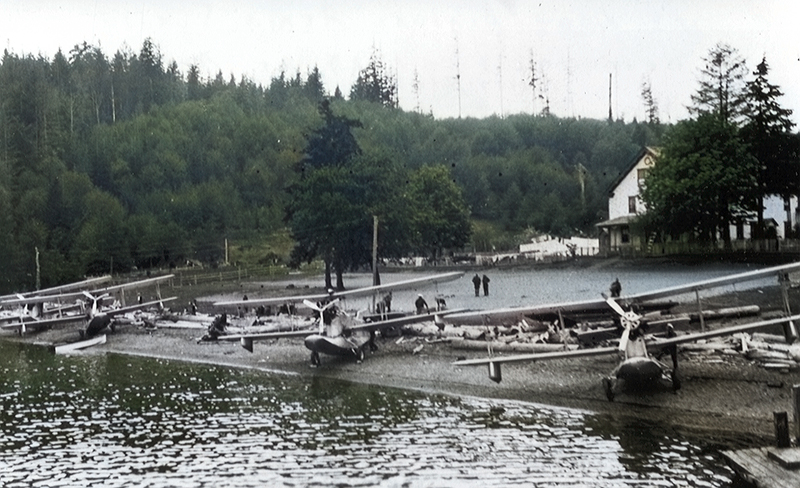
. |
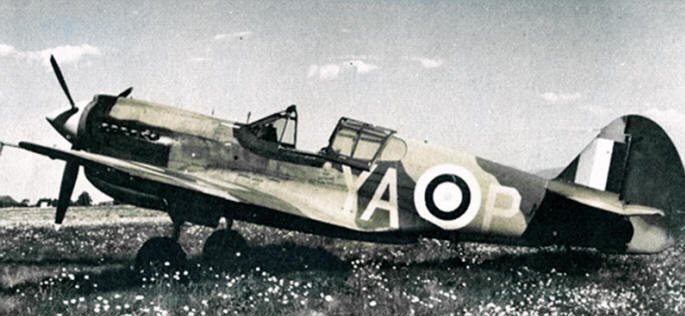 |
At the
beginning of World War II, the RCAF�s Western Air Command
needed a site that would support heavy land based aircraft
on the coast. They chose a location southeast of Port Hardy
and began construction in early l942. The first aircraft to
use the station were P-40 Kittyhawks of RCAF 14 Sqn.,
who in March of 1943 were
en route from Vancouver to Alaska. Adverse weather resulted
in a four-day unplanned stopover at the still unfinished
station.
Return to
map
|
|
The first Lockheed Vega Ventura
aircraft of No. 8 (Bomber Reconnaissance) Squadron arrived
at the new RCAF station beginning in October 1943, with the
rest of the Squadron following on 11 December. The new base
became fully operational on 3 January 1944 and quickly
became a key refuelling and transit stop for United States
Air Force as well as the RCAF.
|

. |
|
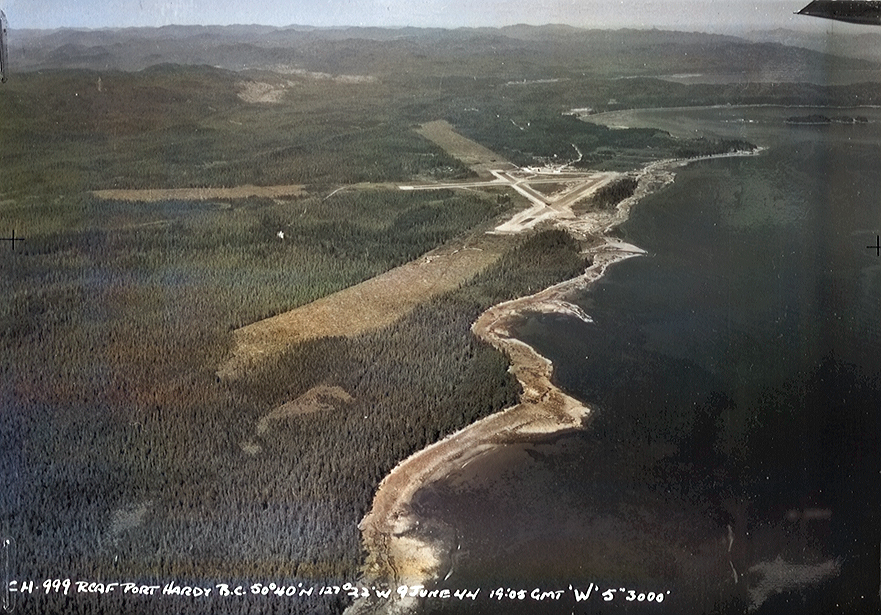
The base was staffed
by several hundred men, many of them married.
Given the lack of family housing, an informal
community of cabins and shacks grew on Crown
Land near the station. The official powers
turned a blind eye to �Jokerville� in the name
of maintaining morale, leaving the dependants to
enjoy an active social life and even to elect
their own mayor.
With the end of the war, RCAF Station Port Hardy
was officially disbanded. The airport was
licensed by Ministry of Transport on February
14, 1946 as an approved alternative airport and
refueling for commercial aircraft.
|
St. Columba Church,
Port Hardy�formerly the officers� mess!
|
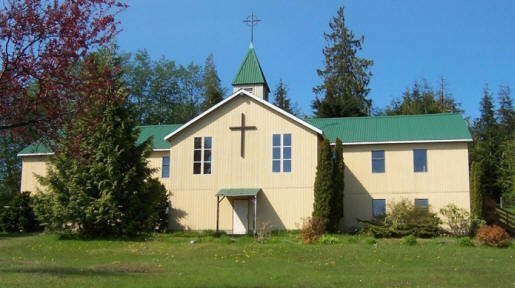 |
|
|
The former RCAF
station facilities provided much raw material
for the town�s post-war development. Barracks
were converted to accommodation for staff and
contractors. Several buildings were relocated
and repurposed: the current Port Hardy Legion
was originally the Sergeant�s Mess; the
Officers� Mess was split into two parts and
became the St Columba and St Bonaventure
Churches; and, the large barrack hall was
dismantled and re-erected as the Avalon School.
The hospital located near Glen Lyon Creek was
transported by barge to Alert Bay in 1947 and
served as their hospital for a number of years.
Return to
map
|
|
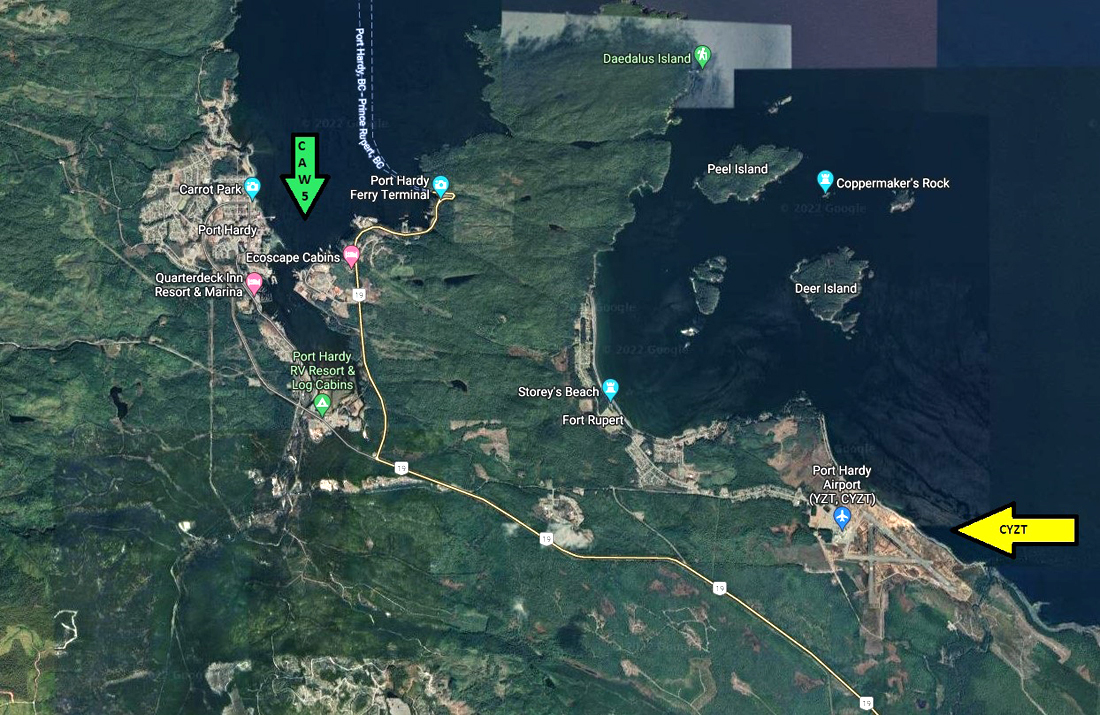 |
The airport continues to
be owned and operated by Transport Canada (2021).
It presently offers full services for transient
aircraft; regular scheduled services with Pacific
Coastal Airlines; and, charter services with
Wilderness Seaplanes. A new terminal was opened
after an indigenous blessing ceremony on May 27,
2022.
The Port Hardy seaplane
base (CAW5) serves the town from the sheltered Hardy
Bay adjacent to the town itself.
|
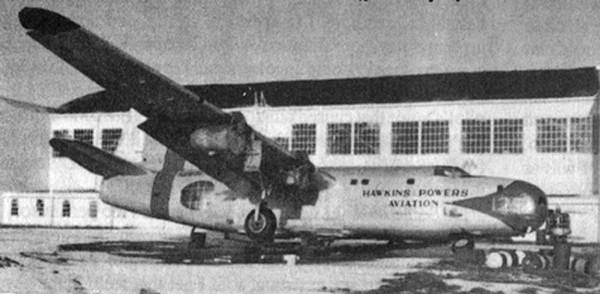
. |
Bad weather and relative
isolation have given Port Hardy its share of accidents.
For several years a four-engine Privateer water bomber
sat behind the old RCAF hangar. It arrived August 9,
1975 at Port Hardy with one complete engine failure and
problems with the others, overshot the runway and ended
up in the salt chuck off the end of Runway 19. It was
dragged back to the airport and eventually dismantled.
|
|
The mural:
In 1981, a main wall in the (then)
Trans-Provincial Airways pilot�s lounge was in need of some
upgrading, thanks to the removal of years� worth of pinups.
A pilot waiting for his assignment, Jack Schofield, got up
on a chair and started to draw what would become a 16 x 10
foot mural, showing the history of the Port Hardy operators
and incorporating as many of the names of pilots who had
flown from the airport as he could find�around 200 in all.
The mural was completed in December 1981 and to Jack�s
surprise on his return from a trip home for Christmas, was
cut out of the pilots� room and mounted over the baggage
carousel in the public terminal.
With the demolishing of
the old terminal and construction of the new one under way,
the mural was delivered to the BC Aviation Museum. It is
now displayed in the Museum�s Norseman Room�a monument to
Vancouver Island�s coastal aviation history. |
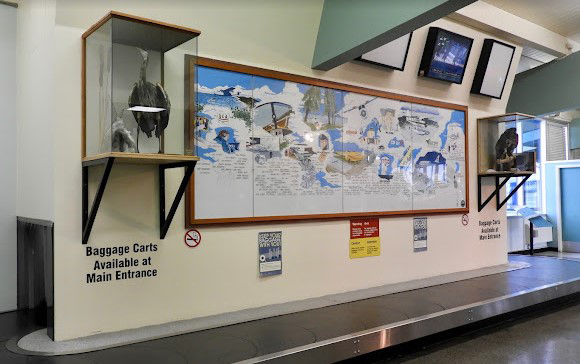 |
Note: Photos courtesy
Chris Weicht except for final aerial view courtesy Google Maps.
 �
British Columbia Aviation Museum Updated:
2023-01-16 �
British Columbia Aviation Museum Updated:
2023-01-16
|